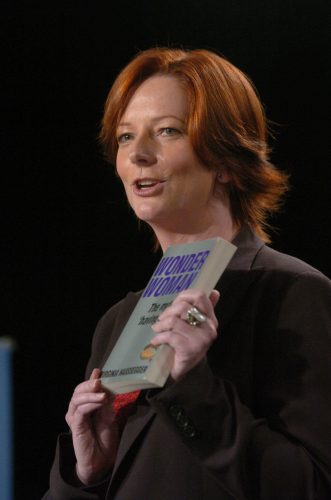Television journalist Jamila Mujahid will never forget the day she broke the biggest story of her life. And she did it wearing her bedroom slippers! The city of Kabul had been under heavy fire for days, and the Taliban were weakening. Finally on the 13th of November 2001 they succumbed, and before dawn truckloads of Taliban fled the capital. Later that morning a fierce gun battle with the remaining hardliners ended in a bloodbath, with Taliban bodies splayed on the street. When the shooting stopped Jamila ran out of her home and raced through the streets in her Burqa and slippers. She made it to the studio just in time to become the first woman on-air to announce the fall of the Taliban and “freedom to the people of Afghanistan”. For the women of Afghanistan it was a stunning moment, ripe with promise. Later, the prize winning journalist told writer Sally Armstrong, “I never thought a time would come when I would be reading the news again.
The US flag was raised with much fanfare outside the Embassy in Kabul and George W Bush claimed “Today women are free!” World leaders, including Australia’s then Prime Minister, John Howard, quickly joined the chorus, declaring the liberation of Afghanistan’s women. It was a grand and clever ruse.Nearly nine years and several hundred billions of dollars later, the fighting continues, and the women of Afghanistan are not ‘free’. So what has the international community really achieved for Afghan women beyond a plethora of glossy reports that trumpet ‘gender mainstreaming’? Women’s quotas have been agreed, numerous pledges and treaties signed, and the promise of equality enshrined in the constitution. But how fragile are these gains? And why does the gender social justice ledger remain so unbalanced?






